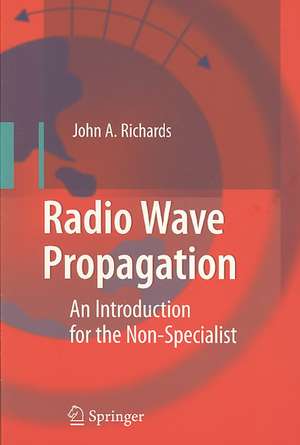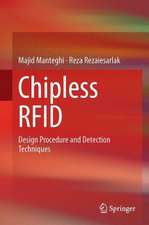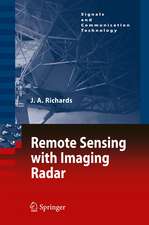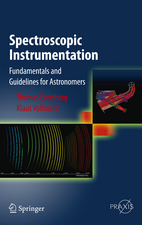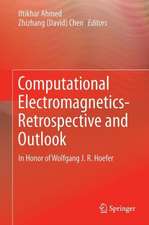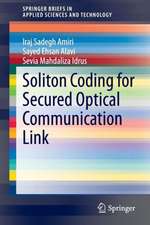Radio Wave Propagation: An Introduction for the Non-Specialist
Autor John A. Richardsen Limba Engleză Paperback – 5 feb 2008
Preț: 380.07 lei
Nou
Puncte Express: 570
Preț estimativ în valută:
72.75€ • 79.05$ • 61.15£
72.75€ • 79.05$ • 61.15£
Carte tipărită la comandă
Livrare economică 21 aprilie-05 mai
Preluare comenzi: 021 569.72.76
Specificații
ISBN-13: 9783540771241
ISBN-10: 3540771247
Pagini: 151
Ilustrații: IX, 127 p.
Dimensiuni: 155 x 235 x 11 mm
Greutate: 0.23 kg
Ediția:2008
Editura: Springer Berlin, Heidelberg
Colecția Springer
Locul publicării:Berlin, Heidelberg, Germany
ISBN-10: 3540771247
Pagini: 151
Ilustrații: IX, 127 p.
Dimensiuni: 155 x 235 x 11 mm
Greutate: 0.23 kg
Ediția:2008
Editura: Springer Berlin, Heidelberg
Colecția Springer
Locul publicării:Berlin, Heidelberg, Germany
Public țintă
Professional/practitionerCuprins
Fundamental Concepts: Propagation in Free Space.- The Surface Wave.- The Sky Wave.- The Space Wave.- Noise.- Examples of Microwave Systems.- The Effect of Materials on Propagation.
Textul de pe ultima copertă
This work treats the essential elements of radio wave propagation without requiring recourse to advanced electromagnetic concepts and equations; however it provides sufficient detail to allow those concerned with wireless systems to acquire quickly a practical working knowledge of the important concepts.
The treatment commences with an analysis of how energy (and power) is conveyed in free space, taking essentially a radiative transfer approach and thus avoiding the need to understand electric and magnetic field propagation at the outset. It then examines in some detail how the proximity of the earth and the atmosphere cause the radiation travelling from a transmitter to a receiver to follow one or more of three mechanisms – the surface, sky and space waves. Most attention is given to the space wave since it is the mechanism most commonly encountered in contemporary applications.
Radio wave propagation is placed in a practical context by considering the design aspects of communications systems at microwave frequencies. That requires an understanding of noise and its importance in systems design.
The author takes the unusual step of including a fuller consideration of the electromagnetic properties of materials late in the book rather than as an introductory chapter as found in more theoretical treatments. It is placed here so that the contexts in which the knowledge of material properties is important have already been established.
The material is based on a single semester overview course suitable for later year undergraduate students in engineering or science.
The treatment commences with an analysis of how energy (and power) is conveyed in free space, taking essentially a radiative transfer approach and thus avoiding the need to understand electric and magnetic field propagation at the outset. It then examines in some detail how the proximity of the earth and the atmosphere cause the radiation travelling from a transmitter to a receiver to follow one or more of three mechanisms – the surface, sky and space waves. Most attention is given to the space wave since it is the mechanism most commonly encountered in contemporary applications.
Radio wave propagation is placed in a practical context by considering the design aspects of communications systems at microwave frequencies. That requires an understanding of noise and its importance in systems design.
The author takes the unusual step of including a fuller consideration of the electromagnetic properties of materials late in the book rather than as an introductory chapter as found in more theoretical treatments. It is placed here so that the contexts in which the knowledge of material properties is important have already been established.
The material is based on a single semester overview course suitable for later year undergraduate students in engineering or science.
Caracteristici
Radio wave propagation is placed in a practical context by considering the design aspects of communications systems Essential elements of radio wave propagation without requiring recourse to advanced electromagnetic concepts Provides quickly a practical working knowledge of the important concepts
